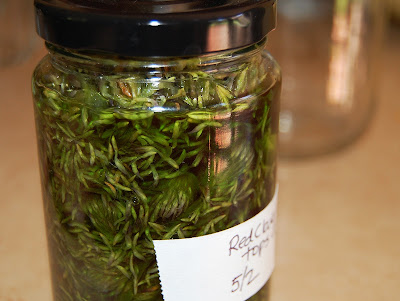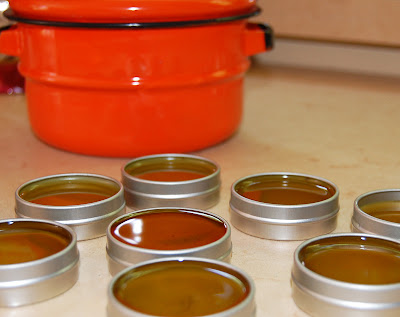this is my doggy, k.c. - stands for 'kinda cute' - but i think she is really cute. k.c. just had a huge tumor removed. it had completely taken over one of her kidneys - and was as large as a grapefruit. the biopsy showed there were cancer cells present - but the doctor also removed a close by lymph node - and it was clean. she is recovering amazingly from the surgery for a 14 year old puppy - and i will monitor her every few months with xrays. i started researching and reading and researching. i got a book that specifically deals with herbs for pets and put together this regimen for k.c.. my thought was - cleanse - and strengthen ! i didn't have time to make these tinctures - so i purchased them to get her started immediately.
burdock (Arctium lappa) - a blood purifier. it helps the kidneys filter out impurities from the blood very quickly. clears congestion in respiratory, lymphatic, urinary and circulatory systems. releases water retention, stimulates digestion, aids kidney, liver and gallbladder function.
dandelion (Taraxacum officinale) - used for the treatment of the gall bladder, kidney and urinary disorders. strengthens the kidneys. an infusion of the root encourages the steady elimination of toxins from the body.
red clover (Trifolium pratense) - purifies the blood by acting as a diuretic (helping the body get rid of excess fluid) and expectorant (helping clear lungs of mucous), improving circulation, and helping cleanse the liver.
astragalus (Astragalus membranaceus) - improves depressed immunity, recommended for the treatment of AIDS and other viral diseases, and as an adjuvant in cancer therapy. helps strengthen the body against disease. helps protect the body against various stresses, including physical, mental, or emotional stress. protects the body from diseases such as cancer and diabetes. contains antioxidants, which protect cells against damage caused by free radicals, byproducts of cellular energy. protects the liver.
milk thistle (Silybum marianum) - protects the liver from a variety of harmful substances. prevents toxins from penetrating the interior of liver cells, while promoting the growth of healthy new cells to repair liver damage. has a renewing effect on the kidneys.
i have her taking .5ml twice a day. i am mixing the tinctures into healthful raw wet food.
one dropper full of tincture is approx. 30 drops which is 1ml. - so half a dropper full twice a day.
although this is all new to me - i am feeling really confident in what she is taking and truly believe in the power and medicinal value of these herbs. i know i am helping her to keep as healthy as possible at this time :)










































